On October 8, New York Governor Kathy Hochul announced the launch of the New York State Secure Choice Savings Program. This mandatory program requires eligible employers that do not offer a retirement plan to enroll employees in a state-administered Roth IRA automatically.
Who Must Comply with the New York Secure Choice Savings Program?
The program applies to private sector employers that:
- Have had ten or more employees in the previous calendar year
- Have been in business for at least two years
- Do not currently offer a qualified retirement plan (e.g., 401(k), 403(b), SIMPLE IRA, SEP IRA)
Part-time and seasonal employees count toward the employee threshold.
Employer Responsibilities Under the Program
Though the State of New York will notify covered employers as their deadline approaches, an online portal is now open.
Employers are responsible for:
- Registering their company and providing basic information about employees, payroll and banking
- Beginning payroll deductions and submitting contribution information and funding for employees who choose to stay in the program
- Remitting payroll contributions for each cycle and maintaining employee records
Employers do not contribute to these accounts, and do not assume fiduciary responsibility under the program. More information regarding compliance requirements for employers is available within the New York Secure Choice Fact Sheet.
Key Enrollment Deadlines for Employers
Covered employers are required to register by the following deadlines:
- Employers with 30 or more employees: March 18, 2026
- Employers with 15 to 29 employees: May 15, 2026
- Employers with 10 to 14 employees: July 15, 2026
How the Program Works for Employees
Employees are automatically enrolled in the New York Secure Choice Savings Program at a 3% default contribution. Contributions are automatically deposited into a Roth IRA, which employees can opt out of, modify their contributions, or adjust their investments at any time. These accounts are also portable if the employee leaves the employer.
Evaluating Retirement Plan Options: Which Plan is Right for Your Business?
Now is an opportune time for employers to evaluate if the state-run Secure Choice Savings Program or an alternative qualified retirement plan (e.g., a 401(k) plan) is the better fit for their unique needs. While the Secure Choice Savings Program will be managed by the program’s board and requires less administration, qualified retirement plans may offer greater flexibility and tax advantages:
| Key Details | New York Secure Choice (Roth IRA) | 401(k) Plan |
| Compensation Limit | Subject to income limits; must make less than $165,000 MAGI (single household) or $246,000 MAGI (married filing jointly) | No income limit to participate (compensation limit applies for contribution purposes, currently $350,000) |
| Employee Contribution Limits | Up to $7,000; plus $1,000 catch-up contribution for age 50 and older | Up to $23,500, plus a catch-up of $7,500 for 50 and older, or $11,250 ages 60-63 |
| Erisa Protections | Not an ERISA employer-sponsored plan | Subject to ERISA |
Tax Planning Considerations
The tax treatment of retirement contributions are also important to consider when evaluating various plan options:
- Secure Choice Savings Program contributions are post-tax (Roth), made by employees only, as employer contributions are not permitted.
- With a 401(k), employees may make pre-tax or Roth contributions, and employers can make matching or profit-sharing contributions (typically tax-deductible to the business). Plan setup and administrative fees may also be deductible business expenses.
- For owners and higher-earning employees, the higher contribution limits and deferral flexibility of a 401(k) can meaningfully affect annual tax planning and long-term savings potential.
Employers often weigh tax treatment, contribution flexibility and benefit structure when considering which retirement plan model best fits their organization and long-term strategy.
SECURE 20: Key Provisions for Employers to Know
As employers consider retirement plan options in light of the New York Secure Choice Program, federal retirement legislation might also influence their planning. The SECURE 2.0 Act offers incentives aimed at making it easier and more affordable to provide a retirement plan, including:
- Startup cost tax credits for small employers: Up to $5,000/year for three years for eligible employers with ≤100 employees (with 100% reimbursement for those with ≤50 employees)
- Employer contribution credits: Up to $1,000 per employee, phased down over five years for eligible small employers
- Auto-enrollment credit: A $500 annual credit for three years for employers that add an automatic-enrollment feature to a new or existing plan
- Starter 401(k) and safe harbor 403(b) options: available to employers who do not currently sponsor a retirement plan, offering streamlined setup and IRA-aligned contribution limits
- Student loan matching and withdrawal flexibility: Allows employer matches on qualified student-loan payments and provides penalty-free access in emergency or hardship situations
These incentives can help offset plan costs and make private retirement plans more compelling. Employers may consider how each approach aligns with workforce needs and long-term strategy.
How Grassi Can Help
Whether employers choose to participate in the New York Secure Choice Program or implement a private retirement plan, early and informed planning can help support compliance, manage administrative responsibilities and align benefit programs with organizational and workforce needs.
Grassi’s advisors can help your organization evaluate retirement plan options, understand the impacts of SECURE 2.0 and prepare for employee benefit plan compliance.
Frequently Asked Questions
Who is required to participate in New York Secure Choice? Private-sector employers in New York with ten or more employees in the prior calendar year, operating for at least two years, and not already offering a qualified retirement plan are required to participate.
Do employers have to contribute to New York Secure Choice Roth IRA accounts? No. Employer contributions are not permitted under New York Secure Choice.
Can employers choose to offer their own retirement plan instead? Yes. Employers may establish a qualified plan (e.g., 401(k), SIMPLE IRA, SEP, PEP) instead of joining Secure Choice.
When do employers need to comply with New York Secure Choice Enrollment? Enrollment deadlines begin in 2026, based on employer size. Early planning and payroll setup is recommended.

